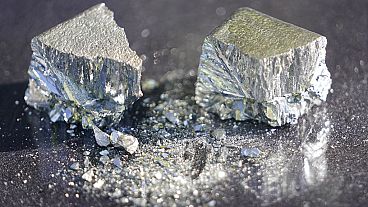Fashion websites in the UK were rated on their carbon footprints. How much does each homepage generate in CO2?
New research shows the hidden environmental impact of 20 of the UK's most popular fashion and shopping websites.
Victoria's Secret was rated the dirtiest website, not because of its racy lingerie, but rather its carbon footprint.
The report from energy comparison site Uswitch looks at everything from the way a website is hosted to the size of fonts, the images used and their impact on a site’s energy efficiency.
While Victoria's Secret came out as the worst offender, H&M’s website was rated the cleanest.
The iconic lingerie brand’s site was found to emit 6.64g of CO2 per homepage click, compared to just 0.29g of CO2 per visit emitted by budget-friendly clothing retailer H&M.
Just 135 visits to Victoria's Secret amounts to the same carbon emissions as driving 5km, the report discovered.
The top 10 dirtiest fashion websites:
These sites were rated based on the amount of carbon per page visit.
- victoriassecret.com 6.64
- nastygal.com 5.67
- uniqlo.com 5.22
- footasylum.com 3.35
- everything5pounds.com 3.24
- simplybe.co.uk 2.98
- shein.com 2.88
- prettylittlething.com 2.47
- newlook.com 1.99
- jdsports.com 1.94
The top 10 cleanest fashion websites:
- hm.com 0.29
- adidas.com 0.37
- marksandspencer.com 0.45
- louisvuitton.com 0.49
- mango.com 0.50
- lyst.co.uk 0.52
- zara.com 0.67
- primark.com 0.79
- allsaints.com 0.95
- skims.com 0.98
Calculating carbon footprints
To estimate each site’s impact on the planet, Uswitch used the carbon calculator, Website Carbon, which works out the amount of energy used when someone loads a page on a website.
This includes the energy needed by the data centre (the cloud), the telecoms network and the user’s computer or mobile, as well as whether the centre is using green energy to power it.
“Improving energy efficiency and prioritising renewable energy sources are two key ways a website can reduce its carbon emissions,” says carbon expert, Tom Greenwood from Website Carbon.
“A good place to start is making sure the size of images, fonts and videos are kept to an absolute minimum, this will reduce the amount of data that needs to be transferred when someone uses the site, and will in turn reduce the amount of energy used.”
By reducing website emissions customers also benefit from improved user experience, better security, better accessibility and faster load times,” says Greenwood.
Every weekday at 15.30 CET, Euronews Living brings you a cutting edge, environmental story from somewhere around the world. Download the Euronews app to get an alert for this and other breaking news. It's available on Apple and Android devices.




